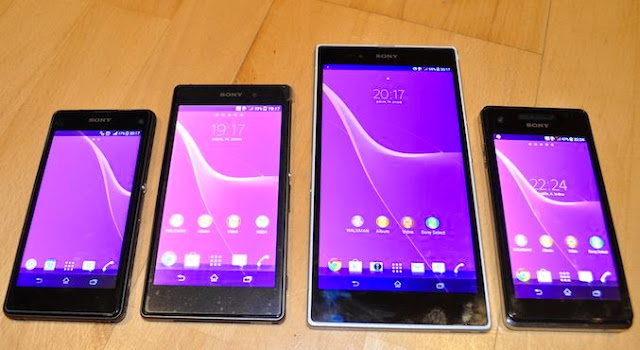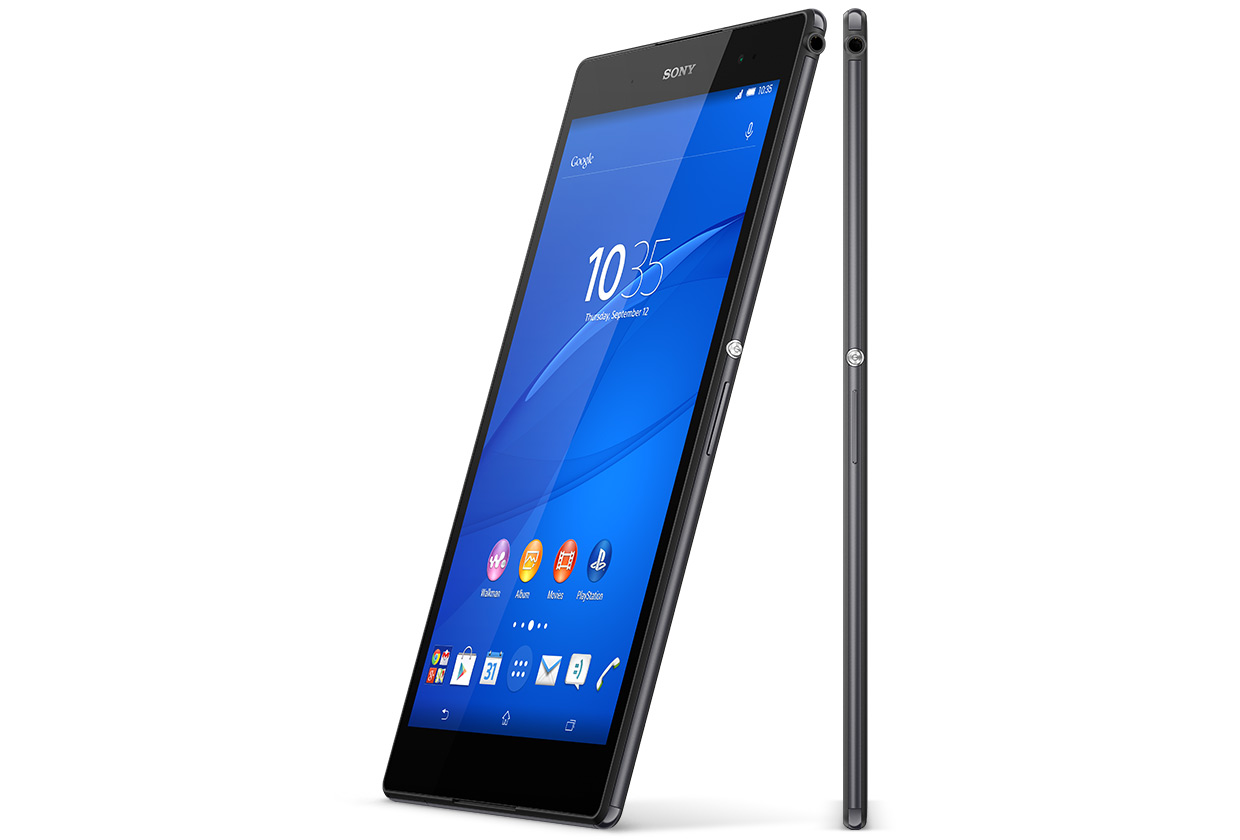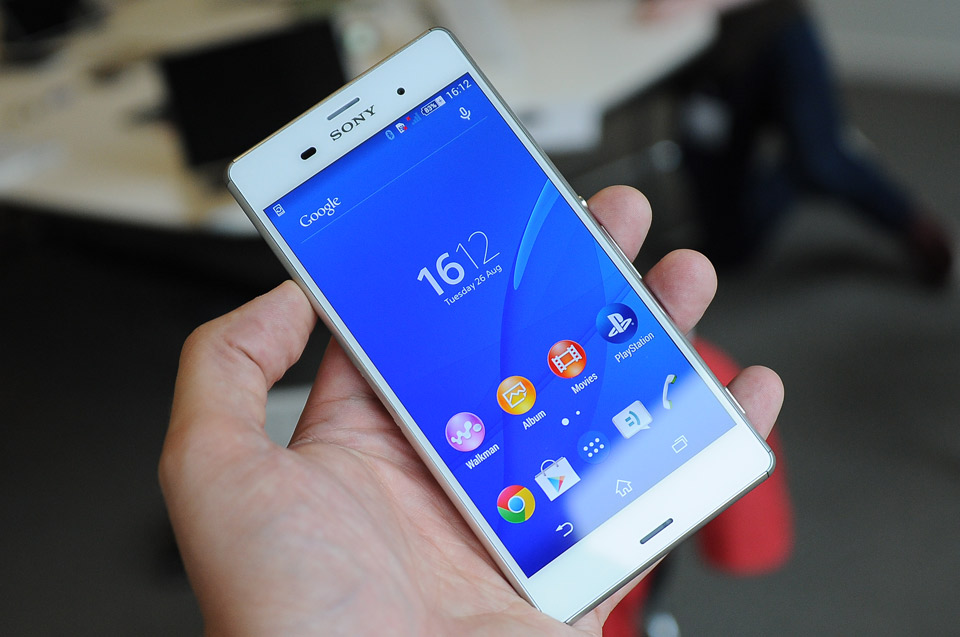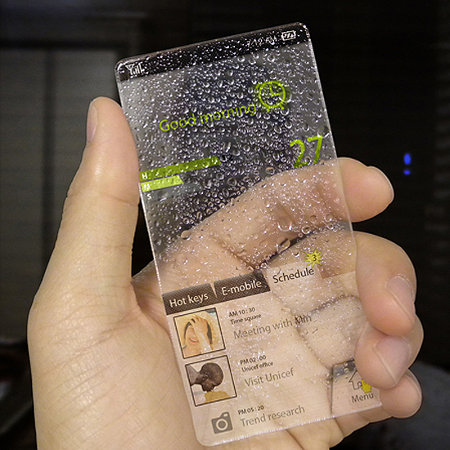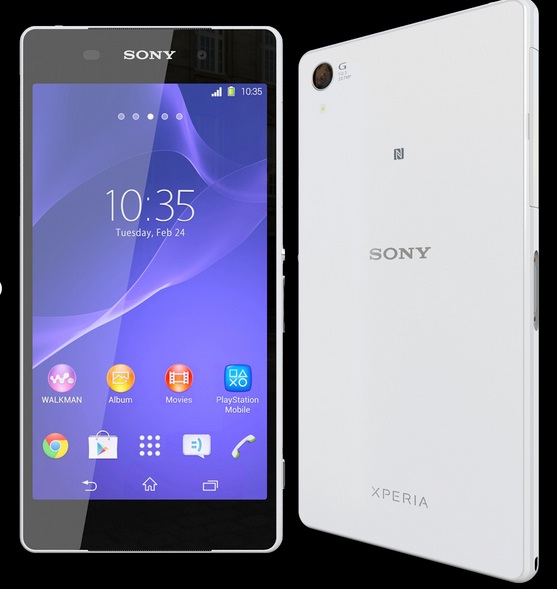
Wednesday, September 24, 2014
Tuesday, September 23, 2014
Sunday, September 21, 2014
Thursday, September 18, 2014
Tuesday, September 16, 2014
iPhone 6 and 6 Plus
At a Glance
At its special media event, Apple announced the 4.7-inch iPhone 6 and the 5.5-inch iPhone 6 Plus. Both devices will launch on September 19 in the first wave of countries, with pre-orders starting on September 12.
Specs
4.7-inch iPhone 6 features a 1334 x 750 display
5.5-inch iPhone 6 Plus features a 1920 x 1080 display
16 GB, 64 GB, and 128 GB
$199, $299, and $399 / $299, $399, and $499
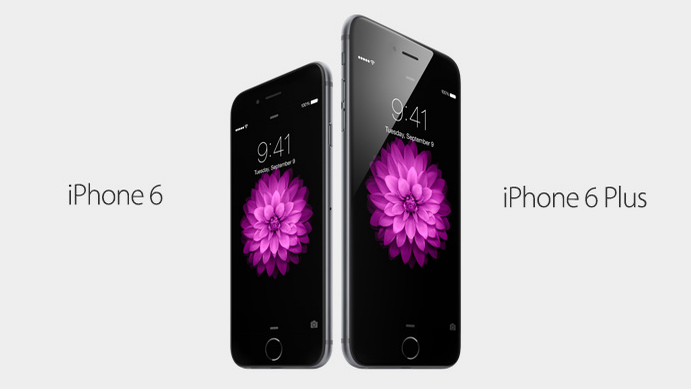
Apple has unveiled two new iPhones, the 4.7-inch iPhone 6 and the 5.5-inch iPhone 6 Plus. Along with larger screens and a completely new iPad-style design with an ultra thin body and rounded corners, the two new phones offer faster processors, better cameras, and Apple's new Apple Pay payment system.
Apple's new iPhones are available in Gold, Silver, and Space Gray, and are available in 16, 64, and 128 GB capacities. The iPhone 6 pricing starts at $199, while the iPhone 6 Plus pricing starts at $299.

While both models include the same 64-bit A8 chip and the same general design, there are several differences between the two phones. The iPhone 6 measures in at 6.9mm, while the iPhone 6 Plus is slightly thicker at 7.1mm. Apple's iPhone 6 Plus also has three major differentiating factors: optical image stabilization for the camera, and a longer battery life, and an iPad-style landscape mode that displays more content on the screen.
Though the iPhone 6 Plus has optical image stabilization, both phones got some major camera improvements in form of sensor upgrades, improved tone mapping, better noise reduction, and new "Focus Pixel" technology, which improves the phone's ability to select autofocus points. For videos, there's a new 240fps slo-mo option, along with support for shooting in 1080p at 60fps. The front-facing camera was also upgraded, with an f/2.2 aperture that lets in more light and new burst mode capabilities.

Both phones have an impressive new "Retina HD Display," with the iPhone 6 featuring a resolution of 1334 x 750 (326 ppi) and the iPhone 6 Plus featuring a resolution of 1920 x 1080 (401 ppi).
Design wise, the phones more closely resemble the iPad and the iPod touch than the iPhone 5s. Both models have soft, rounded corners and a curved glass screen that melds smoothly into the thin metal body of the device. The volume buttons on the left side of the device are now pill-shaped, and the power button is located on the right side of the device for easier one-handed use.
To further make its devices easier to use one-handed, Apple has added in a new double tap home button gesture called "Reachability," which moves items from the top of the screen to the bottom of the screen for quick access.
Other new features in the iPhone 6 and iPhone 6 Plus include WiFi calling support, faster 802.11ac WiFi, and support for Voice over LTE (VoLTE).
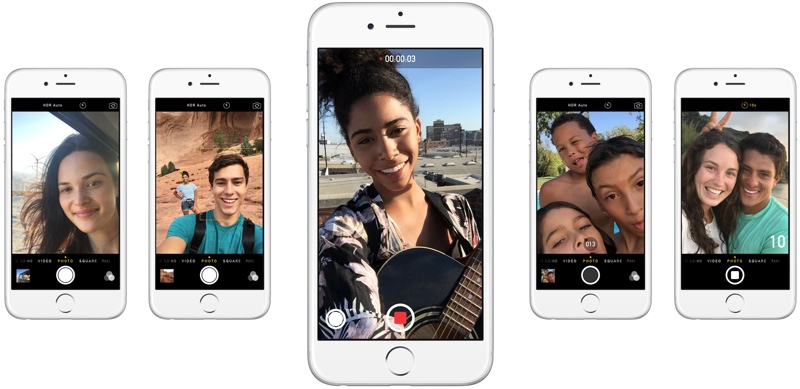
At its special media event, Apple announced the 4.7-inch iPhone 6 and the 5.5-inch iPhone 6 Plus. Both devices will launch on September 19 in the first wave of countries, with pre-orders starting on September 12.
Specs
4.7-inch iPhone 6 features a 1334 x 750 display
5.5-inch iPhone 6 Plus features a 1920 x 1080 display
16 GB, 64 GB, and 128 GB
$199, $299, and $399 / $299, $399, and $499

Apple has unveiled two new iPhones, the 4.7-inch iPhone 6 and the 5.5-inch iPhone 6 Plus. Along with larger screens and a completely new iPad-style design with an ultra thin body and rounded corners, the two new phones offer faster processors, better cameras, and Apple's new Apple Pay payment system.
Apple's new iPhones are available in Gold, Silver, and Space Gray, and are available in 16, 64, and 128 GB capacities. The iPhone 6 pricing starts at $199, while the iPhone 6 Plus pricing starts at $299.

While both models include the same 64-bit A8 chip and the same general design, there are several differences between the two phones. The iPhone 6 measures in at 6.9mm, while the iPhone 6 Plus is slightly thicker at 7.1mm. Apple's iPhone 6 Plus also has three major differentiating factors: optical image stabilization for the camera, and a longer battery life, and an iPad-style landscape mode that displays more content on the screen.
Though the iPhone 6 Plus has optical image stabilization, both phones got some major camera improvements in form of sensor upgrades, improved tone mapping, better noise reduction, and new "Focus Pixel" technology, which improves the phone's ability to select autofocus points. For videos, there's a new 240fps slo-mo option, along with support for shooting in 1080p at 60fps. The front-facing camera was also upgraded, with an f/2.2 aperture that lets in more light and new burst mode capabilities.

Both phones have an impressive new "Retina HD Display," with the iPhone 6 featuring a resolution of 1334 x 750 (326 ppi) and the iPhone 6 Plus featuring a resolution of 1920 x 1080 (401 ppi).
Design wise, the phones more closely resemble the iPad and the iPod touch than the iPhone 5s. Both models have soft, rounded corners and a curved glass screen that melds smoothly into the thin metal body of the device. The volume buttons on the left side of the device are now pill-shaped, and the power button is located on the right side of the device for easier one-handed use.
To further make its devices easier to use one-handed, Apple has added in a new double tap home button gesture called "Reachability," which moves items from the top of the screen to the bottom of the screen for quick access.
Other new features in the iPhone 6 and iPhone 6 Plus include WiFi calling support, faster 802.11ac WiFi, and support for Voice over LTE (VoLTE).

512GB SD card announced by SanDisk
SanDisk has revealed a 512GB SD card, the highest storage capacity ever seen in this form factor.

SanDisk yesterday launched the 512GB Extreme PRO SDXC UHS-I, the world’s highest capacity SD card and the first to reach 512GB, or half a terabyte. This new offering is designed to meet the demands of industry professionals who require the most advanced gear available for shooting 4K Ultra HD (3840x2160p) video, Full HD video (1920x1080) and high-speed burst mode photography.
“As an industry leader, SanDisk continues to push the boundaries of technology to provide customers with the innovative, reliable, high-performance solutions they have come to expect from us,” said Dinesh Bahal, vice president of product marketing. “4K Ultra HD is an example of a technology that is pushing us to develop new storage solutions capable of handling massive file sizes. The 512GB SanDisk Extreme PRO SDXC UHS-I card is a tremendous advancement that enables professionals to reliably store more content on a single card than ever before.”
Since the first 1GB SD card in 2004, storage capacities have grown exponentially and this new 512GB card represents a 500-fold increase in a decade – yet maintains the same size form factor. It delivers write speeds up to 90MB/s and transfer speeds up to 95 MB/s. The card is also temperature-proof (withstanding between -40ºC and 85ºC), waterproof, shockproof and X-ray proof. The product will initially go on sale for $800 (£490), but this cost is likely to decline rapidly in the months and years ahead.
The same exponential trend has been witnessed in the smaller-sized microSD format. In February this year, SanDisk revealed the first microSD to reach 128GB of storage capacity.

SanDisk yesterday launched the 512GB Extreme PRO SDXC UHS-I, the world’s highest capacity SD card and the first to reach 512GB, or half a terabyte. This new offering is designed to meet the demands of industry professionals who require the most advanced gear available for shooting 4K Ultra HD (3840x2160p) video, Full HD video (1920x1080) and high-speed burst mode photography.
“As an industry leader, SanDisk continues to push the boundaries of technology to provide customers with the innovative, reliable, high-performance solutions they have come to expect from us,” said Dinesh Bahal, vice president of product marketing. “4K Ultra HD is an example of a technology that is pushing us to develop new storage solutions capable of handling massive file sizes. The 512GB SanDisk Extreme PRO SDXC UHS-I card is a tremendous advancement that enables professionals to reliably store more content on a single card than ever before.”
Since the first 1GB SD card in 2004, storage capacities have grown exponentially and this new 512GB card represents a 500-fold increase in a decade – yet maintains the same size form factor. It delivers write speeds up to 90MB/s and transfer speeds up to 95 MB/s. The card is also temperature-proof (withstanding between -40ºC and 85ºC), waterproof, shockproof and X-ray proof. The product will initially go on sale for $800 (£490), but this cost is likely to decline rapidly in the months and years ahead.
The same exponential trend has been witnessed in the smaller-sized microSD format. In February this year, SanDisk revealed the first microSD to reach 128GB of storage capacity.
Apple’s new iOS 8 will change the way brands connect with their customers
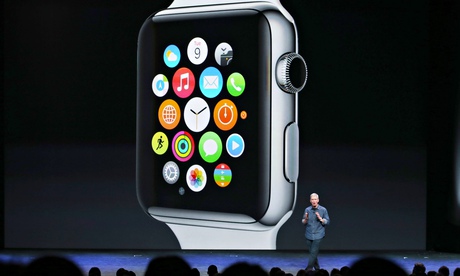
Confirmation of the release date for Apple’s next major firmware update iOS 8 was for the most part overshadowed on Tuesday with the Californian tech giant unveiling the iPhone 6, iPhone 6 Plus, the Apple Watch, and the new Apple Pay mechanism. Despite that, the new operating system that the majority of their devices will run should be of great significance to brands and marketers looking to reach more consumers. iOS 8 is centred around the concept of integration, and brands can implement their products and services into more of the device than ever before.
Greater insight into consumer behaviour
Britain’s fitness fixation has grown exponentially over recent years. There are now hundreds of calorie counters, run trackers and health monitoring apps in the App Store, including offerings from commercial giants such as Nike. Apple’s acknowledgement of this market will help those brands become more useful on the new iPhones, and the new Health app will comprise data from the tools people use to monitor their wellbeing, presenting it in a unified dashboard.
The apps can communicate with each other too, meaning details of your sleep patterns will give Nike a better understanding of how to improve your performance – and recommend you products accordingly. Health is a delicately personal issue, and Apple’s prioritisation of the field should be of interest to health and fitness brands looking to increase their exposure in the tech market.
The “smart home” is increasing in popularity, and users will be able to lock doors and switch off lights remotely using their iPhone, iPad or Apple Watch. As the technology becomes more widely used, an increasing number of brands will surely move into this market, where smartphones and tablets are undertaking general utilities. It’s great to be able to play Candy Crush on your way home from work, but the ability to turn on the oven from 40 miles away gives home appliance brands unprecedented licence to revolutionise their products. Haier and Honeywell are two of the impressive names already announced as partners, and Phillips released a prototype screenshot of how users might be able to control their Hue ambient lighting system with iOS 8.
Big news for big brands
On balance, there’s little doubting how exciting iOS 8 is for users, developers and brands. Since the first build of the operating system in 2007, the general functionality and structure that it uses has not drastically changed. For that reason, people around the world have developed a familiarity and understanding of the elegant and practical interface. With brands now granted a licence to expand their apps and services into more of the OS than ever before, people will be able to connect with products in a way previously unthinkable.
Smart Apple Watch
Apple’s unveiling of its Apple Watch smartwatch on Tuesday has thrown wearable technology under the spotlight - but Apple has joined a very busy market of useful, internet-connected watches. Here’s everything you need to know about smartwatches, and nine of the best.
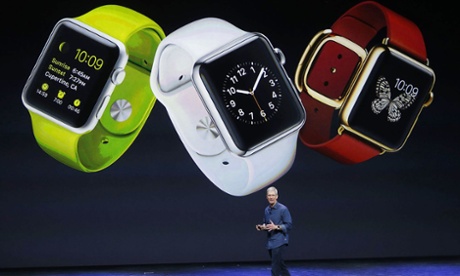
The long-anticipated Apple Watch is an extension of the iPhone on the wrist. It has a touchscreen display, but also what Apple is calling a “digital crown” on the side, which is a jog dial that allows users to turn it to adjust features and settings, including zooming in and out of a map, or setting the time.
Apple’s main focus is on apps, health and communications, with third-party apps from Twitter and Facebook shown off. A heart rate sensor on the back combines with movement tracking for fitness monitoring.
The Apple Watch won’t be available until Spring 2015, which means the rest of the pack has quite a head start on Apple.
Expert view: We don’t know until we get our hands on one next year.
Cost: $350 (£215) in spring 2014

The long-anticipated Apple Watch is an extension of the iPhone on the wrist. It has a touchscreen display, but also what Apple is calling a “digital crown” on the side, which is a jog dial that allows users to turn it to adjust features and settings, including zooming in and out of a map, or setting the time.
Apple’s main focus is on apps, health and communications, with third-party apps from Twitter and Facebook shown off. A heart rate sensor on the back combines with movement tracking for fitness monitoring.
The Apple Watch won’t be available until Spring 2015, which means the rest of the pack has quite a head start on Apple.
Expert view: We don’t know until we get our hands on one next year.
Cost: $350 (£215) in spring 2014
Subscribe to:
Posts (Atom)
